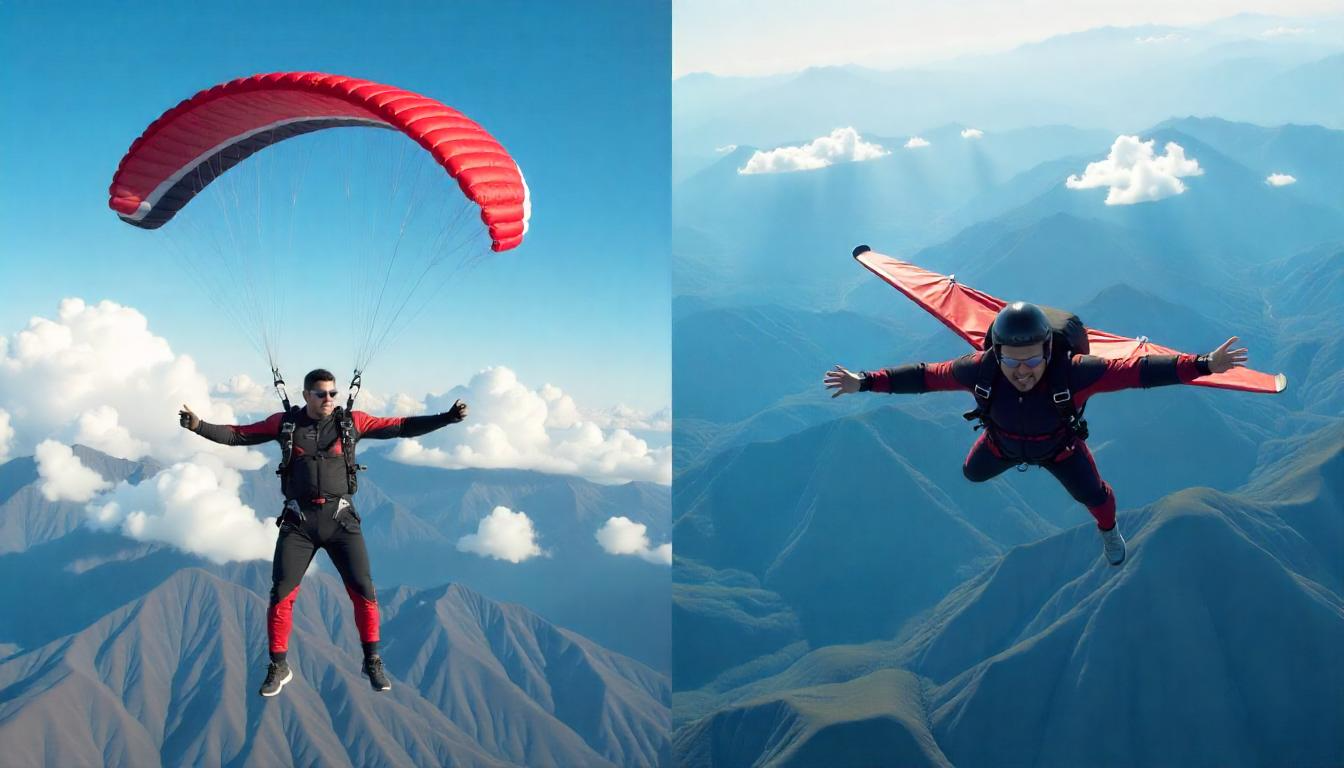Picture this: gliding effortlessly on a snowboard, racing down a stunning mountain, all while sitting in your cozy living room. This is not just a dream; it is becoming a reality thanks to virtual reality technology in extreme sports. The impact of this innovation on extreme sports is profound. It is changing the way people experience adventure sports by bringing it directly into their homes.
Virtual reality provides a safe way for individuals to enjoy extreme sports without the fear of injury or other risks associated with traditional outdoor activities. This technology allows users to test their skills and face challenges that would usually be impossible to attempt in real life. Extreme sports athletes can practice techniques in a controlled environment. Fans can enjoy thrilling experiences normally reserved for the brave.
In this article, we will look closely at how virtual reality is merging with extreme sports activities. We will explore the benefits and the opportunities it creates for both athletes and audiences. From snowboarding to surfing, virtual reality makes adventure accessible to everyone. Get ready to dive into an exciting new way to enjoy the rush of extreme sports without ever leaving your home.
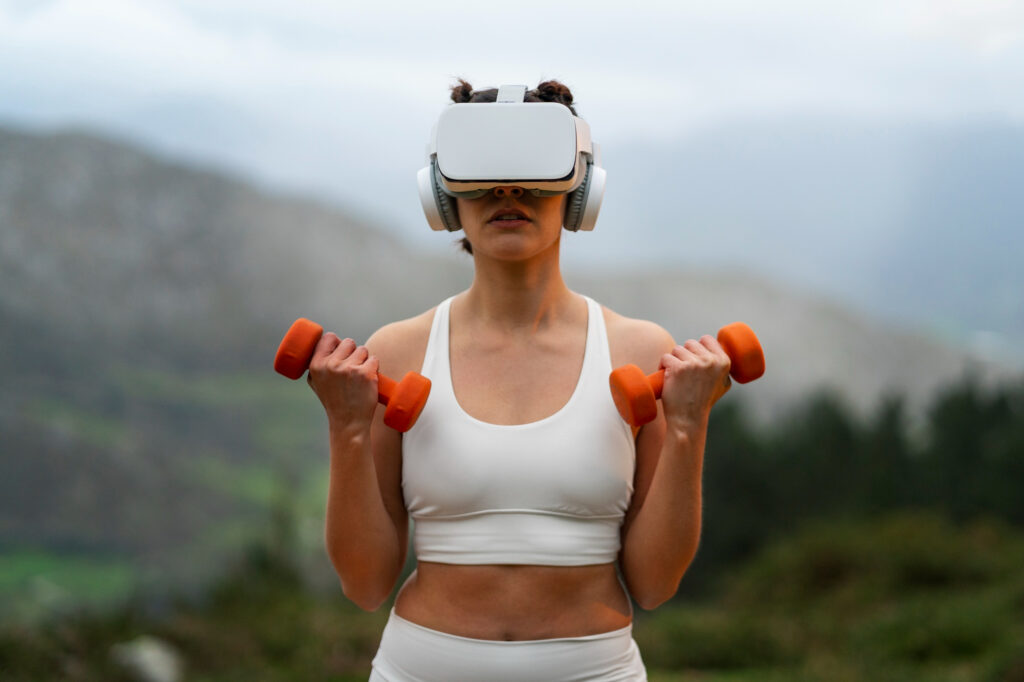
VR’s Impact on Extreme Sports Enthusiasts
Immersive Experiences:
Virtual reality (VR) has revolutionized the way extreme sports enthusiasts engage with their passions, offering vicarious thrills that allow users to experience the adrenaline rush of activities like skydiving or rock climbing without the inherent risks. Simulated environments, such as immersive skydiving scenarios and virtual climbing walls, provide a platform for individuals to explore extreme sports that may otherwise be inaccessible due to geographical or logistical barriers. VR also allows users to conquer their fears in a controlled setting, enabling gradual exposure to daunting scenarios, such as heights, which can build confidence and encourage participation in real-world adventure sports.
Entertainment and Socialization:
Beyond the immersive experiences, VR fosters a sense of community and social connectivity among extreme sports enthusiasts. Multiplayer VR environments invite users to compete against their friends in thrilling virtual competitions or collaborate on challenging missions, enhancing the enjoyment and camaraderie typically found in real-life extreme sports settings. These shared experiences cultivate a community spirit that transcends geographical boundaries, allowing enthusiasts from all over the world to connect, share tips, and celebrate achievements together. As a result, VR not only serves as a tool for individual exploration and skill-building but also as a means to create lasting bonds among passionate individuals united by their love for extreme sports.
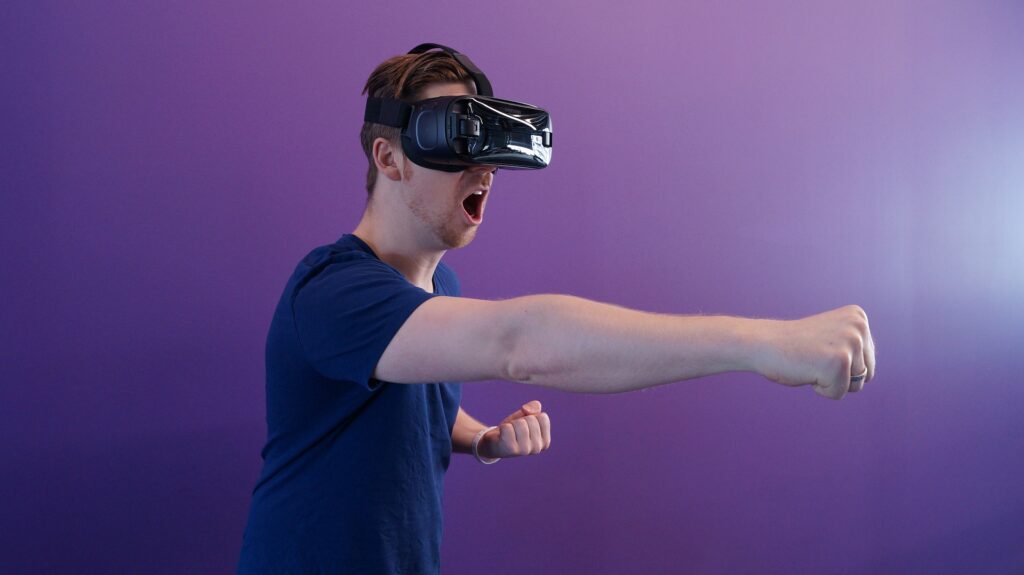
VR as a Training Tool for Athletes
Enhanced Skill Development:
Virtual reality (VR) is emerging as a transformative tool for athletes looking to refine their skills across various extreme sports activities. One major benefit of VR technology is that it creates a safe space for practicing the same skills repeatedly. This controlled setting allows athletes to perfect their techniques and maneuvers without the physical risks associated with real-world scenarios. For example, a snowboarder can repeatedly practice complex tricks or land difficult jumps in a virtual landscape, gradually building muscle memory and confidence. By breaking down each movement into manageable components, athletes can fine-tune their performance while receiving immediate feedback on their actions. Such repetitive practice is invaluable in high-adrenaline sports, where precision and timing are essential for success.
In addition to enhancing technical skills, VR serves as an effective tool for risk mitigation. Before attempting potentially dangerous maneuvers in real life, athletes can first analyze their strategies and identify possible dangers in a virtual simulation. This can be particularly beneficial in sports like surfing or rock climbing, where athletes face unpredictable conditions and various environmental factors. By navigating these scenarios in a safe and controlled VR setup, athletes can learn to make critical decisions on the fly, preparing them for the dynamic challenges of real-world competitions. Furthermore, VR’s capacity for data analysis allows athletes to track performance metrics—such as reaction time, accuracy, and spatial awareness—over time. This comprehensive data not only highlights areas that require improvement but also aids coaches and trainers in crafting personalized training programs tailored to individual needs and performance goals.

Injury Prevention:
Another vital aspect of VR’s role in athletic training is injury prevention. Extreme sports often come with a high risk of injury, and VR offers a unique way to simulate these high-risk situations in a safe environment. By allowing athletes to engage in realistic training scenarios without the physical toll that would typically accompany their practice, athletes can push their limits without compromising their safety. For instance, a climber can practice scaling a virtual cliff face, experiencing the pressure of height and the need for precision without risking a fall. This type of immersive training prepares athletes mentally while also reducing the likelihood of injuries that could occur during actual training sessions.
Moreover, VR can enhance both physical conditioning and mental preparedness by effectively simulating the physical demands of extreme sports. By integrating elements of physical exercise into the VR experience, athletes can improve their strength, endurance, and overall conditioning in ways that mimic actual performance conditions. For example, when training for a race, runners can immerse themselves in virtual courses that replicate various terrains and weather conditions, helping them to acclimate their bodies to the rigors they will encounter. Besides physical conditioning, VR plays a crucial role in mental training as well. Athletes can learn to manage the pressures of competition, visualize their success, and create mental resilience through immersive experiences. This preparation helps to develop a strong mental game, which is often as critical to success in extreme sports as physical prowess.
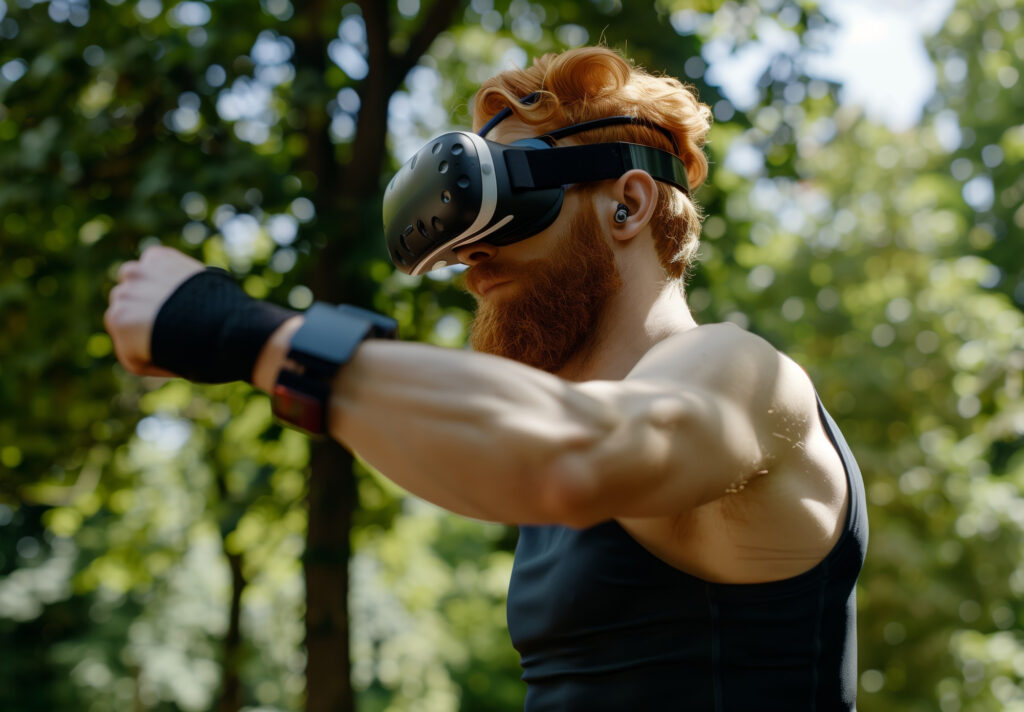
The Future of VR in Extreme Sports
Advancements in VR Technology for Extreme Sports:
The future of virtual reality (VR) in extreme sports is poised for remarkable advancements that promise to elevate the immersive experience to unprecedented levels. One of the most exciting developments lies in the enhancement of realism through improved graphics, haptic feedback, and advanced motion tracking systems. As technology progresses, athletes will find themselves in hyper-realistic environments that mimic the sensations and dynamic challenges of actual extreme sports.
This increased realism will allow users to engage with the virtual world in ways that evoke the physical responses and emotional thrills associated with real-life experiences. For instance, advancements in haptic feedback technology can simulate the adrenaline rush of wind on one’s face during a virtual skydiving session or replicate the unstable surface of a rocky climb, providing athletes with a comprehensive training experience while minimizing risks associated with physical training. Additionally, improved motion tracking will ensure that user inputs are seamlessly translated into the virtual world, creating an interactive environment that responds intuitively to participants’ movements, thus increasing the effectiveness of skill development.
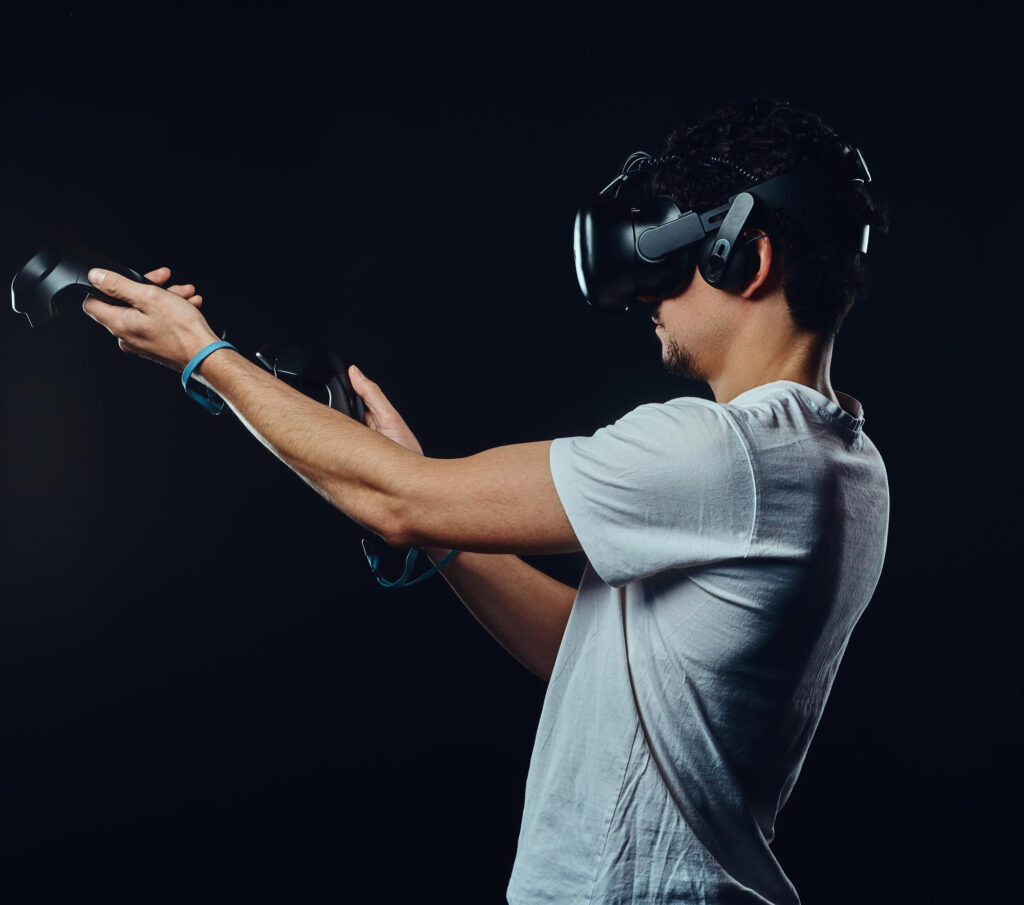
Ethical Considerations and the Future of VR:
Artificial intelligence (AI) will also play a pivotal role in shaping the future of VR within extreme sports, offering tailored training programs that evolve as athletes progress. By analyzing user performance data, AI can adapt the difficulty of challenges on-the-fly, ensuring that training remains suitably challenging without being overwhelming. This adaptive learning approach will enable athletes to push their limits incrementally, fostering growth while still prioritizing safety. Moreover, the potential for AI-powered coaches will bring personalized guidance to a new level—not only providing real-time feedback and drills but also analyzing individual physical and psychological responses to optimize training regimens. However, as the integration of VR in extreme sports becomes more prevalent, it raises essential ethical considerations that must be addressed.
Concerns regarding potential addiction or disengagement from reality could emerge as individuals become more immersed in virtual experiences, potentially leading to a detachment from authentic interactions with the physical world. Furthermore, it is crucial to ensure that VR experiences are safe and accessible to all users, creating an inclusive environment that encourages participation while minimizing risks. Striking the right balance between embracing the innovative possibilities of VR and maintaining a healthy relationship with reality will be vital to the sustained success of this technology in extreme sports.

Conclusion
Virtual reality is transforming the way we engage with extreme sports. It offers a safe and controlled environment where individuals can challenge themselves and push their limits. With virtual reality, anyone can experience high-adrenaline activities like skydiving, rock climbing, or surfing without facing the real dangers associated with them.
This technology makes it possible for both experienced athletes and casual fans to enjoy adventurous extreme sports. It creates a bridge for people who may not have the opportunity or the courage to participate in extreme activities in real life. By using VR, the barriers of fear and risk are removed, allowing for exploration and fun. The future of extreme sports is here, and it is time to embrace it. Whether you are a skilled athlete looking to refine your skills or a beginner eager to try something new, virtual reality offers an adventure waiting to be experienced. Catch the excitement and discover what virtual reality can do for your enjoyment of extreme sports!


